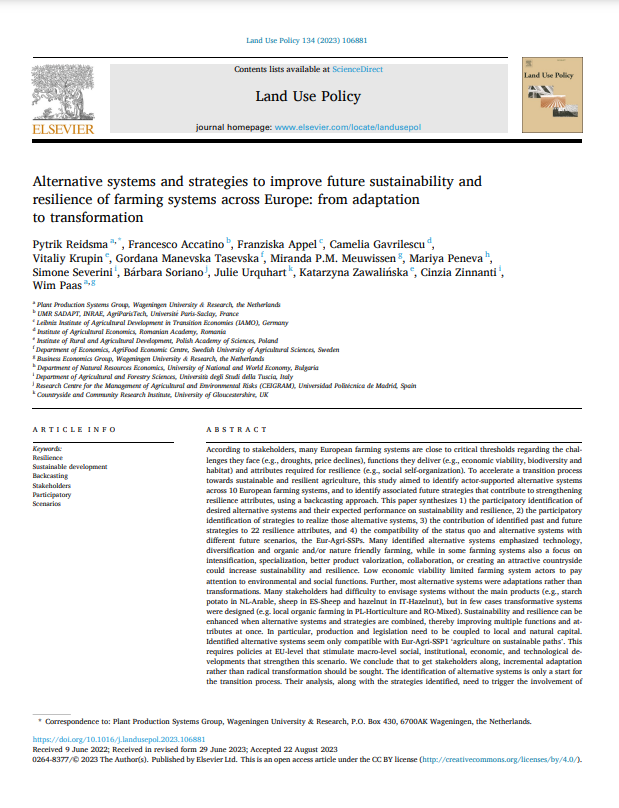Alternative systems and strategies to improve future sustainability and resilience of farming systems across Europe: from adaptation to transformation

According to stakeholders, many European farming systems are close to critical thresholds regarding the challenges they face (e.g., droughts, price declines), functions they deliver (e.g., economic viability, biodiversity and habitat) and attributes required for resilience (e.g., social self-organization). To accelerate a transition process towards sustainable and resilient agriculture, this study aimed to identify actor-supported alternative systems across 10 European farming systems, and to identify associated future strategies that contribute to strengthening resilience attributes, using a backcasting approach. This paper synthesizes 1) the participatory identification of desired alternative systems and their expected performance on sustainability and resilience, 2) the participatory identification of strategies to realize those alternative systems, 3) the contribution of identified past and future strategies to 22 resilience attributes, and 4) the compatibility of the status quo and alternative systems with different future scenarios, the Eur-Agri-SSPs. Many identified alternative systems emphasized technology, diversification and organic and/or nature friendly farming, while in some farming systems also a focus on intensification, specialization, better product valorization, collaboration, or creating an attractive countryside could increase sustainability and resilience. Low economic viability limited farming system actors to pay attention to environmental and social functions. Further, most alternative systems were adaptations rather than transformations. Many stakeholders had difficulty to envisage systems without the main products (e.g., starch potato in NL-Arable, sheep in ES-Sheep and hazelnut in IT-Hazelnut), but in few cases transformative systems were designed (e.g. local organic farming in PL-Horticulture and RO-Mixed). Sustainability and resilience can be enhanced when alternative systems and strategies are combined, thereby improving multiple functions and attributes at once. In particular, production and legislation need to be coupled to local and natural capital. Identified alternative systems seem only compatible with Eur-Agri-SSP1 ‘agriculture on sustainable paths’. This requires policies at EU-level that stimulate macro-level social, institutional, economic, and technological developments that strengthen this scenario. We conclude that to get stakeholders along, incremental adaptation rather than radical transformation should be sought. The identification of alternative systems is only a start for the transition process. Their analysis, along with the strategies identified, need to trigger the involvement of farmers and other ‘enabling actors’ inside and outside the farming systems to make a change, and where needed, systems can evolve into more transformative systems.